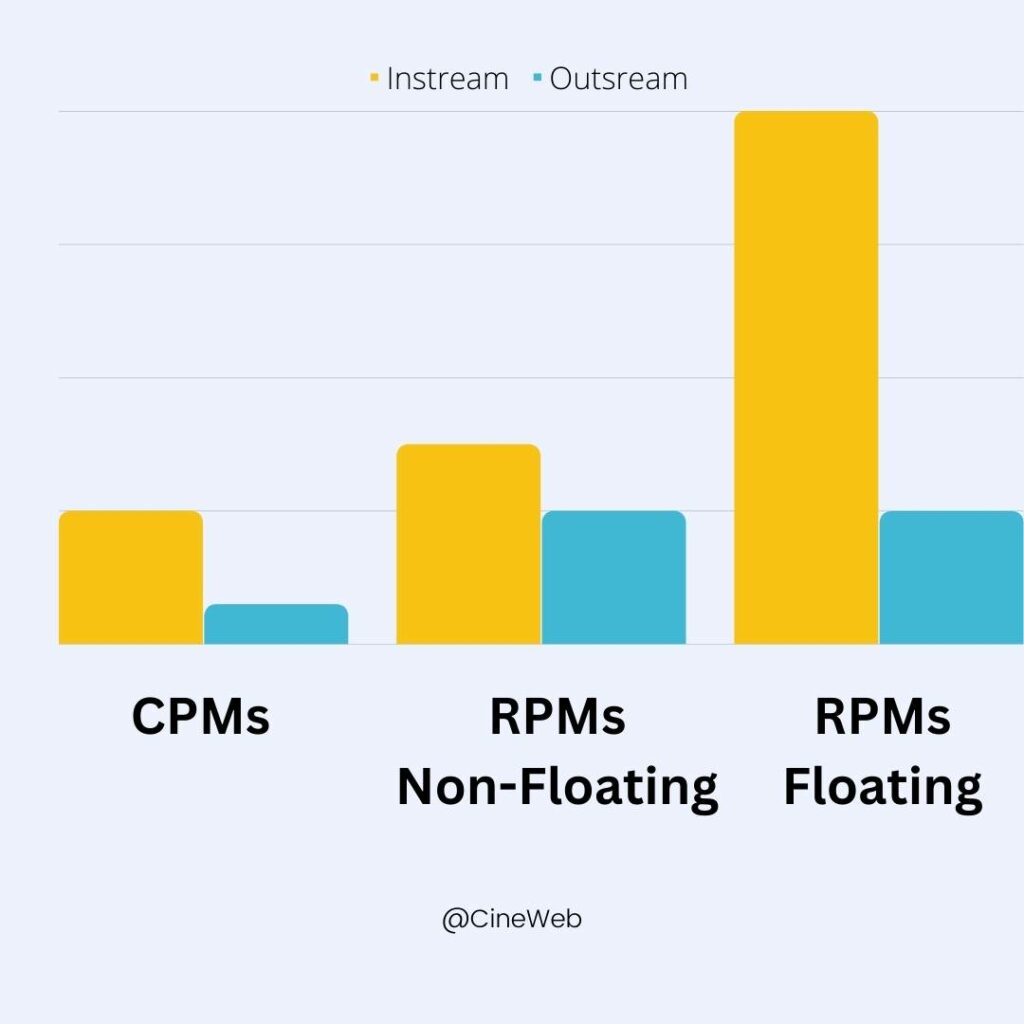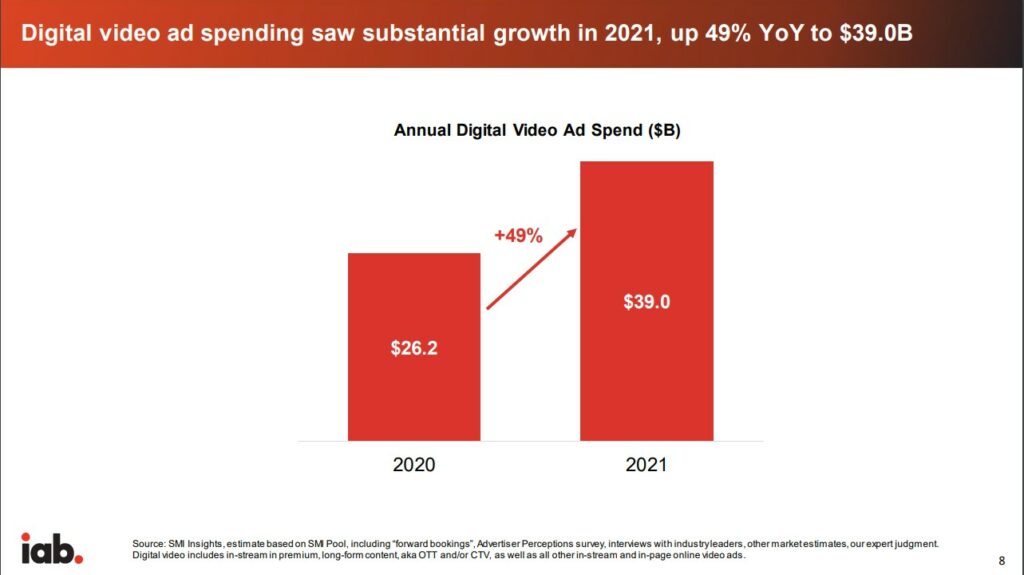
Everything website publishers need to know about instream ads
I. Introduction
In this article, we will cover the different types of instream video ads, including pre-roll, mid-roll, and post-roll ads. We will also discuss the considerations for both advertisers and viewers, including goals and targeting options for advertisers and the viewer experience and ad length.
We will delve into the various ad formats and placements available for instream video ads, including linear, nonlinear and companion ad formats. We will also explore the different monetization options available to website publishers, including cost per impression, cost per view, and cost per action.
We will provide best practices and tips for website publishers looking to optimize their instream video ad campaigns, as well as case studies and examples of successful instream video ad campaigns to provide insight and inspiration.
a. Definition of instream video ads
Instream video ads are a type of digital ads that are played within the video content on a website or platform. They are typically short, 15-30-60 second clips that are placed at the beginning, middle, or end of a video. Instream video ads can be skippable or non-skippable, depending on the platform and the advertiser’s preferences.
b. Importance of instream video ads for website publishers
Instream video ads can be a valuable source of revenue for website publishers. As more and more people consume online video content, advertisers are increasingly turning to instream video ads as a way to reach their target audience. Instream video ads are the most effective way for website publishers to monetize their video content and generate income from their website or platform.
Instream ads offer the highest CPMs. By allowing advertisers to place their ads within the publisher’s video content, website publishers can create a new revenue stream that is directly related to the popularity of their videos.
The use of instream video ads will be a win-win for both advertisers and website publishers. Advertisers get access to a highly engaged audience, and website publishers get a new source of revenue.
c. The differences between instream and outstream video ads
In addition to instream video ads, which are played within the video content on a website or platform, there are also outstream video ads, which are played outside of the main video content. These types of ads are typically displayed within a banner or banner-like ad unit on a website or platform, and they are often set to autoplay when the webpage is loaded.
There are several key differences between instream and outstream video ads:
- Placement: As mentioned above, instream video ads are played within the main video content, while outstream video ads are played outside of it. This means that instream video ads are typically more closely tied to the video content itself, while outstream video ads are not connected to video or article content on the page.
- Format: Instream video ads are typically shorter, 15-30-60 second clips that are played at the beginning, middle, or end of a video. Outstream video ads, on the other hand, can be longer and can take a variety of formats, such as pre-roll, mid-roll, or post-roll ads.
- Viewer experience: Because instream video ads are played within the main video content, they can be more closely tied to the viewer’s experience and engagement with the video. Outstream video ads, on the other hand, can be more disruptive and unrelated.
- Monetization: Both instream and outstream video ads can be monetized in a variety of ways, including cost per impression, cost per view, and cost per action. However, the specific monetization options and pricing models may vary depending on the type of ad and the goals of the advertiser.
- Revenue: On the same viewability rate, instream ads have much higher CPMs. If the instream ads have floating functionality, then they will have higher fill rates than outstream ads.

II. Types of instream video ads
There are various types of instream ads according to the IAB standards.
a. Linear instream ads
Linear instream ads are the top performing ad formats.
Pre-roll ads: Ads played before the main video content. Pre-roll ads are the most common type of instream video ad, and they are played before the main video content on a website or platform. They have the highest viewability, and the highest CPMs.
Mid-roll ads: Ads played during the main video content. Mid-roll ads are played during the main video content, typically at natural breaks or transitions in the video. These types of ads are less common than pre-roll ads, but they can be more effective at capturing the viewer’s attention, as they are already engaged in the video. Mid-roll ads have lower CPMs and viewability than pre-roll ads but have higher CPM and viewability than pot-roll ads.
Post-roll ads: Ads played after the main video content. Post-roll ads are played after the main video content has finished, and they are the least common type of instream video ad. These types of ads can be useful for advertisers who want to reach viewers who have watched the entire video, as they are likely to be more engaged and receptive to the ad. Post-roll ads have lower viewability and CPMs than both pre-roll and mid-roll ads
Pre-roll ads are the most popular type of instream video ad, but mid-roll and post-roll ads can also be effective at reaching and engaging viewers depending on the context and the goals of the advertiser.
b. Non-linear instream ads
Nonlinear video ads are a great way for website publishers to monetize their streaming content. These ads are served as images to “overlay” the video and run concurrently with the content, allowing viewers to see the ad without interruption. Nonlinear video ads offer website publishers more flexibility than linear ads, as they can be delivered as text, static images, interactive rich media, or as video overlays. Additionally, these small overlays can be used as invitations to further engage viewers with a more robust set of interactions. As with linear ads, nonlinear video ads can be served with companion ads for added revenue potential.
c. Companion ads
Companion instream ads provide extended visibility of a sponsor throughout the streaming video experience. These ads come in numerous sizes and shapes and can be delivered in the form of text, static image display ads, rich media, or skins that wrap around the video player. When served in conjunction with a master ad, either linear or nonlinear, the primary objective of the companion ad is to maintain the sponsor’s presence during the streaming video experience.
III. Advertiser, publisher, and viewer considerations
a. Advertisers’ goals and targeting options
Advertisers have a variety of goals when it comes to using instream video ads, including brand awareness, lead generation, and direct sales. To help achieve these goals, advertisers can use targeting options such as demographics, interests, behaviors, and location to ensure that their ads are being shown to the right audience.
According to the study by IAB, video ad spending increased from $26.2B in 2020 to $39.0B in 2021:

b. Publishers’ revenue and CPMs
For website publishers, instream video ads can be a significant source of revenue. The amount of revenue that a publisher can generate from instream video ads depends on a variety of factors, including the popularity of the video content, the demand for ad space, and the ad format and placement.
c. Viewers’ experience and ad length
While instream video ads can be a valuable source of revenue for website publishers, it is important to consider the viewer experience as well. Long or disruptive ads can negatively impact the viewer’s experience and lead to a decrease in engagement and retention.
To optimize the viewer experience, it is generally recommended to keep instream video ads as short as possible while still delivering the desired message. The optimal length for instream video ads is 15-20 seconds, with longer ads experiencing a significant drop-off in viewer attention after the first 30 seconds.
Most instream ad platforms will count a 5-6 second view as a completion. The skip button should be active after 6 seconds to guarantee a completion.
It is important for advertisers, publishers, and viewers to consider the goals, targeting options, and viewer experience when it comes to instream video ads. By striking the right balance, website publishers can effectively monetize their video content while also providing a positive experience for viewers.
IV. Monetization options for website publishers
According to IAB research, publishers mainly offer Cost per mille (CPM) (92%) and CPCv (58%) metric reporting.
Cost per impression (CPM): The cost per impression (CPM) is a commonly used pricing model for instream video ads, and it refers to the cost that an advertiser pays for every 1,000 impressions of their ad. This model is based on the number of times the ad is displayed, regardless of whether it is actually viewed or clicked on. CPM pricing is the best option most of the time.
CPM pricing is often used for brand awareness campaigns or for ads that are targeting a wide audience. It can be a good option for website publishers who have a large volume of traffic and want to monetize their ad impressions.
Cost per view (CPV): The cost per view (CPV) pricing model is based on the number of times an ad is actually viewed, rather than just displayed. This model is often used for campaigns that are focused on driving engagement or conversions, as it rewards advertisers for ads that are actually watched by viewers.
CPV pricing can be a good option for website publishers who have a smaller volume of traffic but want to maximize their revenue per view. It can also be a good option for advertisers who want to ensure that their ads are being watched and are reaching their target audience.
The choice of monetization option depends on the goals of the advertiser and the target audience, as well as the volume and nature of the traffic on the website. Website publishers should consider the pros and cons of each option and choose the one that is most likely to be effective for their specific goals and audience.
V. Best practices for website publishers
Optimizing ad placements and formats: One of the key factors in optimizing instream video ad campaigns for website publishers is the placement and format of the ads.
The highest revenue-generating placements for instream video ads are typically above the fold positions such as mastheads and leaderboards, as well as video players that float on scroll. These types of placements are highly visible and can capture the attention of a wide audience.
In addition, the higher positions tend to result in higher cost per thousand impressions (CPMs) and higher fill rates. Using a floating video player can also boost fill rates by up to 10 times, and larger video players will have higher CPMs.
To optimize ad placements and formats, website publishers should consider the placement and size of the video player, as well as the type of ad unit being used. For example, debloating the player to load ads quickly can help increase fill rates, even for short-time spending visitors or for those who disable the ad unit quickly.
Testing different monetization options: Another important factor in optimizing instream video ad campaigns is testing different monetization options to find the one that works best for the publisher’s specific goals and audience. This might include testing different pricing models, such as cost per impression, cost per view, or cost per action, to see which one generates the most revenue.
Website publishers should also consider testing different ad formats and placements to see which ones perform best. For example, some formats and placements may be more effective for brand awareness campaigns, while others may be better suited for direct response campaigns.
VI. Conclusion
We have covered instream video ads, including the different types of instream video ads, advertiser and viewer considerations, ad formats and placements, and monetization options.
We have also discussed the importance of optimizing ad placements and formats, testing different monetization options, and providing value to viewers through relevant and engaging ad content.
Instream ads can be a valuable source of revenue for website publishers, and by staying up-to-date with industry trends and best practices, publishers can effectively monetize their video content while also providing a positive experience for their viewers.
Looking to the future, it is likely that instream video ads will continue to evolve and grow in popularity as more and more people consume online video content. Website publishers who stay up-to-date with industry trends and best practices will be well-positioned to capitalize on this trend and maximize their revenue from instream video ads.
CineWeb offers top performing instream ad units without the hassle of having to produce engaging video content. We provide video content and monetize all your article pages with instream video ads to multiply your website ad revenue.
FAQ
Instream video ads are ads that are played within the main video content on a website or platform. They are typically played at the beginning, middle, or end of a video, and they can take a variety of formats, such as pre-roll, mid-roll, or post-roll ads.
Instream video ads work by capturing the viewer’s attention while they are engaged in the video content. They can be targeted to specific demographics and interests, and they can be optimized for different goals, such as brand awareness, lead generation, or direct sales.
To deliver instream video ads, advertisers typically use ad servers or demand-side platforms (DSPs) to place their ads on websites or platforms that meet their targeting criteria. When a viewer watches a video that includes an instream ad, the ad server or DSP will serve the ad to the viewer’s device.
Instream video ads can be monetized in a variety of ways, including cost per impression, cost per view, and cost per action. Website publishers can also optimize their instream video ad campaigns by testing different ad placements and formats, as well as different monetization options, to find the combination that works best for their specific goals and audience.
Instream video ads are typically played within the main video content on a website or platform. This means that they are displayed within the video player itself, rather than in a banner or banner-like ad unit on the page.
Instream video ads can be played at the beginning, middle, or end of a video, and they can take a variety of formats, such as pre-roll, mid-roll, or post-roll ads. They are often set to autoplay when the video is loaded, and they may be displayed in a variety of sizes and formats, depending on the specific ad unit being used.
Instream video ads can be displayed on a wide variety of websites, apps and platforms, including video streaming platforms such as YouTube, Vimeo, DailyMotion, social media platforms such as Facebook, Instagram, TikTok, news websites, mobile apps, and more. They are typically targeted to specific demographics and interests, and they can be optimized for different goals, such as brand awareness, lead generation, or direct sales.
There are several different types of video ads, including:
1. Pre-roll ads: Pre-roll ads are video ads that are played before the main video content. These types of ads are often used to capture the viewer’s attention at the beginning of the video and to set the context for the content that follows.
2. Mid-roll ads: Mid-roll ads are video ads that are played during the main video content, typically at a natural break point in the video. These types of ads can be used to keep the viewer engaged and to provide a break in the content.
3. Post-roll ads: Post-roll ads are video ads that are played after the main video content. These types of ads are often used to leave a lasting impression on the viewer or to encourage them to take a specific action.
4. In-banner video ads: In-banner video ads are video ads that are displayed within a banner or banner-like ad unit on a website or platform. These types of ads are often set to autoplay when the webpage is loaded and can be a good option for advertisers who want to reach a wide audience.
5. In-article video ads: In-article video ads are video ads that are placed within the body of an article or blog post. These types of ads are often integrated seamlessly into the content and can be a more subtle way to reach viewers.
6. In-feed video ads: In-feed video ads are video ads that are displayed within a feed or stream of content, such as a social media feed or a news feed on a website. These types of ads are often blended in with the surrounding content and are designed to be relevant and engaging to the viewer.
CineWeb provides attractive video content for instream ads. You don’t need to create or have any video content.






